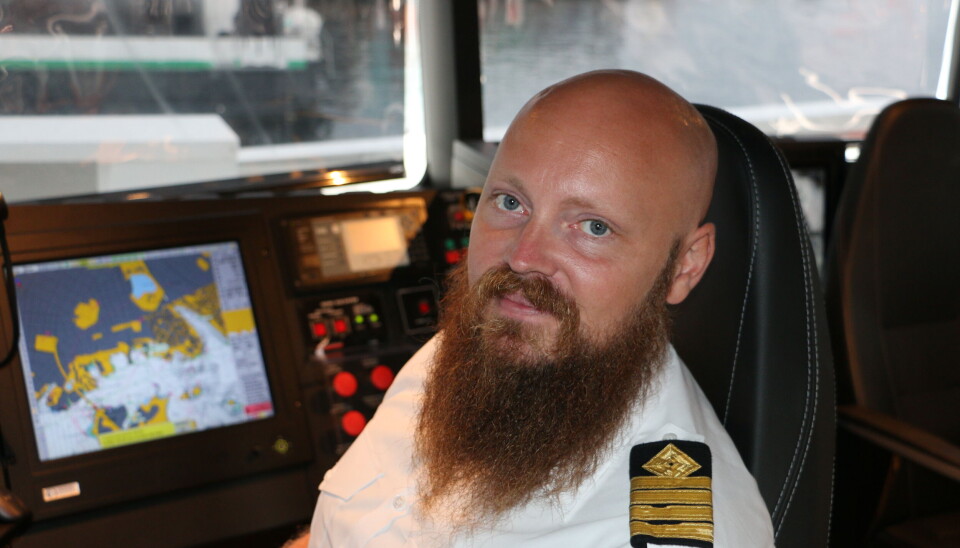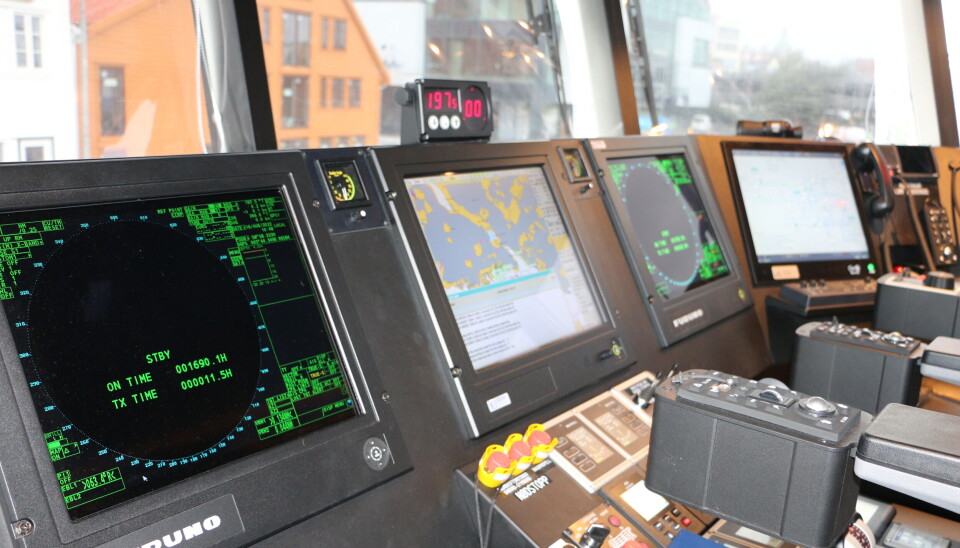
- Distance no object
Einar Netland is the captain of MS "Medstraum", and has been involved in the project for around a year. He has no range anxiety about sailing an all-electric fast ferry.
“No, not at all. We have seen that we have more energy in the batteries than we need to sail the route. Should something happen in one of the battery compartments, all you have to do is slow down and we have more than enough power to get to land.”
A few weeks ago, Einar Netland sailed this year's winner of the Ship of The Year award from Fjellstrand Yard in Hardanger. A voyage that went smoothly according to the captain.
“But it was also a bit frightening at the very beginning, because you lose one sense. As a fast ferry crew, we are used to hearing the roar of the engine, but here it was completely silent. We could see that the boat was moving but we heard nothing,” he says with a smile.
“At first it was a bit uncomfortable, but when you get comfortable with everything that happens, it's like a regular fast ferry, only without the sound. So far everything has gone very well,” he adds.
Another element that is fundamentally different from a normal diesel-powered vessel is how quickly the forces are felt.
The last couple of weeks have been used to test out the vessel, both with and without guests, to make sure that everything works as it should. Among the guests who have been on board is Climate and Environment Minister Espen Barth Eide. He was very impressed by the experience.
“It is a historic voyage into the future,” he told the Norwegian newspaper Aftenbladet.
Einar Netland has been part of the development of the award-winning vessel for a year. It has been an educational process, he says.
“We have had a very good collaboration with Fjellstrand and Kolumbus, and now at the end DNV and the Norwegian Maritime Directorate have also been involved. It has been a good experience.”

The crew has also been giving suggestions for solutions which they believe can improve sailing for both the passengers and the crew. A small detail is that the rescue equipment for the crew on the bridge is stowed in a cupboard on the roof. Easily accessible, should an incident occur.
“They have considered us as best they can at the shipyard, and made the changes that we have asked for. But there are many compromises as well. Among other things, the crew facilities are a little smaller than we are used to. This comes from the focus on keeping the weight as low as possible. We wish that was a little bigger,” says Netland.
“We have what we need, that's not it. But it might be something to think about when building the next boat,” he continues.
There is also no room for anything extra on the bridge. Compact, clear and user-friendly are the words that best describe the workplace for the captain, mate and engineman. They also have a wealth of sensors on board, which warn of the slightest change. An example is that if someone opens the door to the battery compartment, there is a notification of a change in both temperature and humidity. It's just a good thing, says Netland
“It's a habit. We discover what is happening, and it is simply explained. I think Wärtsilä has done a very good job here.”
There is no getting away from the fact that when you are the captain of a vessel that is the first of its kind, colleagues, friends and family alike are curious about the captain's workplace.
“There is great interest in the vessel and how it works. Some may have been a little sceptical, but we see that it works as it should and with very good speed. During the test, we managed 27.1 knots,” he says proudly.
- Were you sceptical when you joined this project?
“It was something completely new, and I guess there was a natural scepticism. But I was the same when we bought an electric car as well, and it works perfectly. So far, we have been pleasantly surprised by most things.”
- Do you think placing the battery packs on the roof is the way of the future to build this type of vessel?
“Yes, I believe so. Moving it up and away from the ship's side, so that it is dry and safe, is the right way to do it. You lose a bit of lounge space, but security is more important than having room for a few more passengers,” says the experienced captain.












